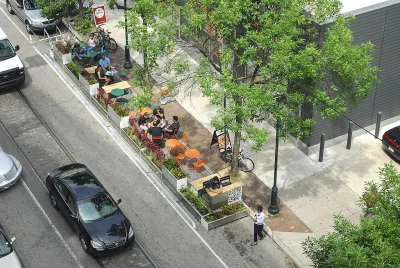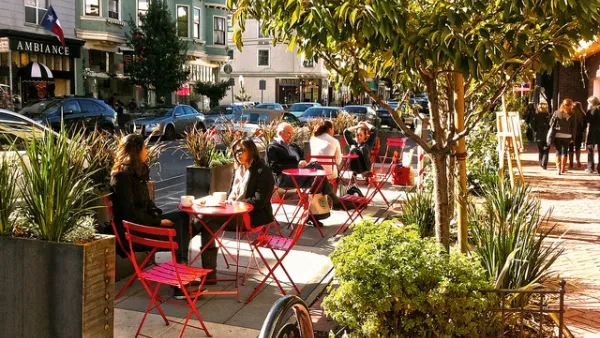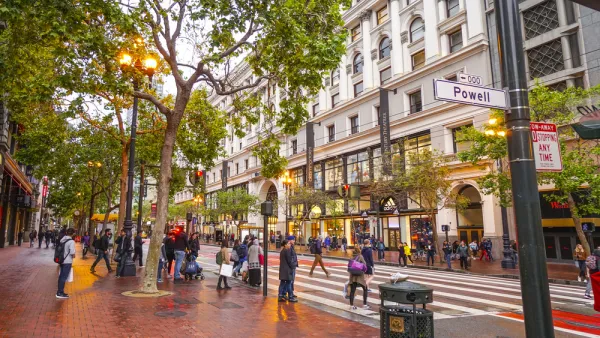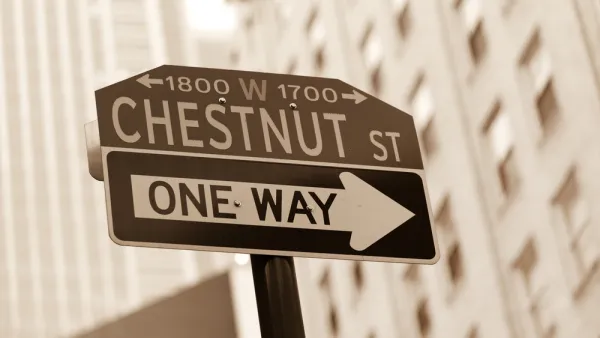A new study from Drexel University's Lindy Institute for Urban Innovation surveys the obstacles and challenges making it more difficult to build car-free public spaces, like plazas and parklets, in Philadelphia.

"Plazas and parklets — parking spaces repurposed for other uses — remain a relative rarity in Philadelphia, and a new study has determined that a lack of staff, funding and leadership, and a convoluted bureaucracy contribute to keeping neighborhoods from embracing these improvements," according to an article by Jason Laughlin.
Despite the wide variety of options available for transforming public space currently devoted to automobile travel or storage, barriers to entry remain at almost every step of the process in Philadelphia, according to a new report by researchers from Drexel University, with help from officials at the city.
According to Laughlin, "the study found people consistently didn’t have enough information about how to apply to build a parklet or plaza, lacked money to invest in one, and were confused by the city’s processes. A flow chart of the city’s application to create a parklet or plaza showed an eight-step odyssey through city agencies and public approvals that offered no clear sense of cost or specifics about what was needed for a site to gain approval. Reviewing an application could take days or a year, depending on how busy the relevant agencies are."
The article includes more on the benefits of parklets and plazas, and local examples of processes that have achieved completion in Philadelphia despite the myriad challenges that stood in the way.
FULL STORY: When it comes to adapting street space for pedestrians, Philly needs a better road map

National Parks Layoffs Will Cause Communities to Lose Billions
Thousands of essential park workers were laid off this week, just before the busy spring break season.

Retro-silient?: America’s First “Eco-burb,” The Woodlands Turns 50
A master-planned community north of Houston offers lessons on green infrastructure and resilient design, but falls short of its founder’s lofty affordability and walkability goals.

Delivering for America Plan Will Downgrade Mail Service in at Least 49.5 Percent of Zip Codes
Republican and Democrat lawmakers criticize the plan for its disproportionate negative impact on rural communities.

Test News Post 1
This is a summary

Test News Headline 46
Test for the image on the front page.

Balancing Bombs and Butterflies: How the National Guard Protects a Rare Species
The National Guard at Fort Indiantown Gap uses GIS technology and land management strategies to balance military training with conservation efforts, ensuring the survival of the rare eastern regal fritillary butterfly.
Urban Design for Planners 1: Software Tools
This six-course series explores essential urban design concepts using open source software and equips planners with the tools they need to participate fully in the urban design process.
Planning for Universal Design
Learn the tools for implementing Universal Design in planning regulations.
EMC Planning Group, Inc.
Planetizen
Planetizen
Mpact (formerly Rail~Volution)
Great Falls Development Authority, Inc.
HUDs Office of Policy Development and Research
NYU Wagner Graduate School of Public Service





























